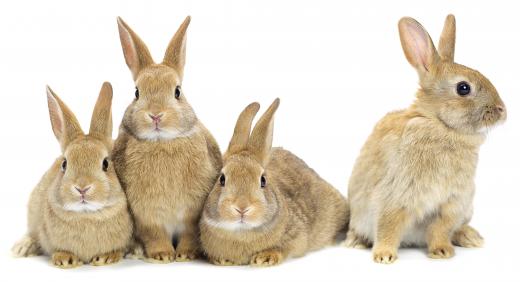What is Parthenogenesis?
 Michael Anissimov
Michael Anissimov
Parthenogenesis is a form of asexual reproduction whereby females can produce viable eggs without fertilization by males. It is an ability possessed by a wide variety of plant and animal species, including most non-vascular plants (liverworts, hornworts, and mosses), a succulent plant genus in South Africa, assorted invertebrates, especially certain arthropods (water fleas, daphnia, rotifers, aphids, some bees, some scorpions, and parasitic wasps), and a few vertebrates (some reptiles, fish, and in a few instances, birds and sharks). In general, parthenogenesis is rare -- most animals capable of asexual reproduction are very simple -- either sponges or cnidarians (jellyfish, coral, etc), too simple to have sexes.
The process of parthenogenesis should not be confused with the quality of hermaphroditism -- a species with both male and female reproductive parts. In most hermaphroditic species, reproduction is still sexual, and requires two participants. Parthenogenesis is the only way that complex animals can clone themselves. In some cases, it can result in offspring that are genetically distinct from the parents, depending on whether the egg is haploid or diploid. Like any other forms of reproduction, parthenogenesis has its benefits (reproduction without the need for a male) and weaknesses (low genetic diversity, susceptibility to harmful mutations that persist through generations).

Many species that can undergo parthenogenesis are also able to use sexual means to reproduce. This shuffles around the genes through recombination, increasing genetic diversity past a necessary threshold. In some reptiles, most notably the New Mexico whiptail, reproduction is exclusively through parthenogenesis. These species tend to be polyploidal, as in, they have more than two sets of chromosomes, meaning their genomes are combinations from two or more parent lizard species in the same genus. The mechanism by which the mixing of chromosomes among species leads to parthenogenesis is unknown, but that is what is observed. Polyploidy occurs in certain hybrids between two or more species.

Although there are no known natural cases of mammal parthenogenesis, it has been induced artificially in rabbits (Gregory Pincus, 1936) mice (Tokyo University of Agriculture, 2004), and monkeys. Induced parthenogenesis in mice and monkeys often results in abnormal development, because the mother's chromosomes are imprinted in the offspring's genome twice, and many mammals genomes are completely dependent on a mix of genes from both sexes for smooth development. As a result, due to ethical reasons, human live births from parthenogenesis are unlikely to be pursued, though the process can be used to create embryos for experimentation. The South Korean scientist Hwang Woo-Suk achieved this in 2007 while attempting to be the first to clone a human. He was not successful in the cloning, but did produce viable human embryos made via artificial parthenogenesis.
AS FEATURED ON:
AS FEATURED ON:














Discussion Comments
@anon261779: Not normally, no.
Do abnormalities usually occur in this process of reproduction?
Post your comments